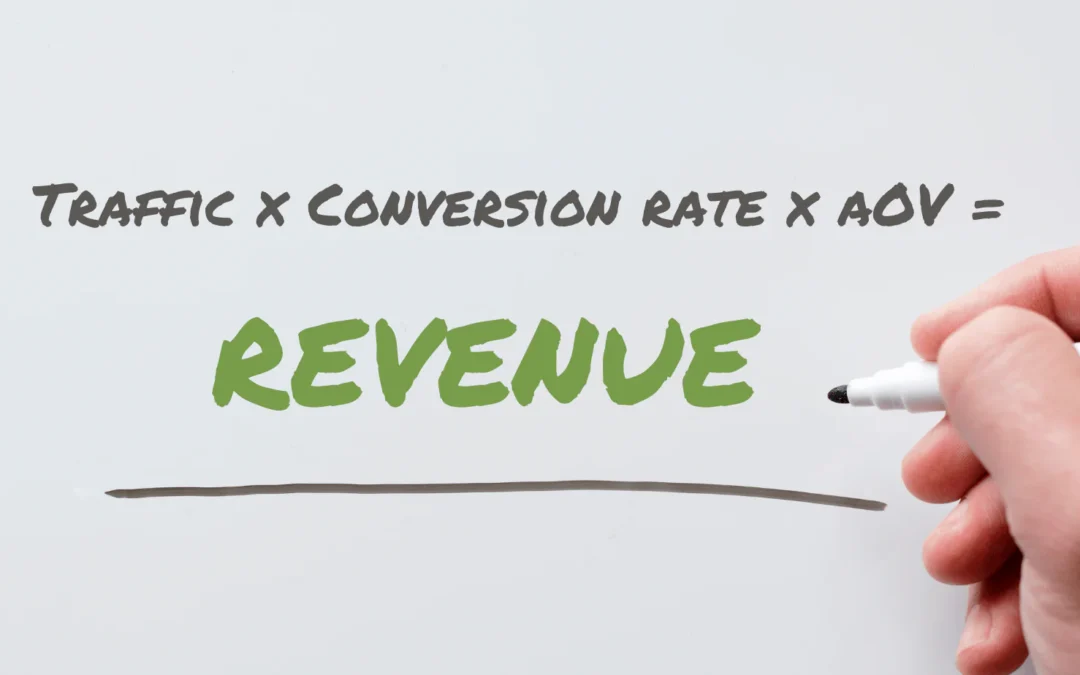Forecast Series Part 2 (of 4)
Today’s complex ecommerce environment is challenging, to say the least, for brands who want to grow business revenue predictably.
Executive teams are having conversations about how to navigate new technology and AI to help improve customer shopping experiences so they can win against the competition. As they scrutinize all the data available across tech platforms, many are feeling the effects of data overload. With so many metrics, dashboards, and attribution models at their fingertips, it can feel confusing which metrics really matter and where they should put their focus to create real ecommerce growth.
What metrics should brands measure to predictably and profitably grow their ecommerce revenue?
While there are thousands of metrics you could spend time and money analyzing, there is a simple formula you can use to determine where to focus effort to create predictable growth. The simple ecommerce growth formula we share below uses three metrics, which allow you to make an impact on growth without trying to boil the entire ocean all at once.
Focus on These Three Metrics to Increase Ecommerce Revenue
There are three main metrics that really move the needle when you want to increase ecommerce growth.
The three metrics that have the biggest impact are: Traffic, Conversion Rate, and Average Order Value.
The way they work together to increase your revenue is this simple formula:

While this formula is quite simple, don’t be tempted to skip over its significance.
Using this formula, you can not only forecast your ecommerce revenue, but you can also use it to estimate competitors’ momentum or work backward for a view into revenue coming from the Amazon channel.
To measure these metrics accurately, tools like Tadpull Pond, Google Analytics, Shopify reports, or other ecommerce dashboards are essential. Set up clear tracking for website traffic, ensure conversion events are accurately logged, and calculate average order value by dividing total revenue by the number of orders over a specific period.
These three inputs are the foundation for your revenue forecast. Ideally, it’s best to have several years of data to forecast from so you can pick up seasonality rather than just a random spike, or persistent inventory issues compared to a one-time problem. We often say that a forecast is a lighthouse, not a GPS — it’ll give you directional accuracy but can’t tell you every topographic detail. Directional accuracy means understanding whether you’re trending toward growth or decline, even if it doesn’t specify exact outcomes.
For specific examples of Sessions X AOV X Conv Rate in action, reference the whitepaper here.
Tadpull: Built on Science to Help You Scale
To make forecasting even easier, solutions like Tadpull’s built-in machine learning forecasting feature allow ecommerce teams to leverage historical data to quickly run scenarios and adjust key metrics like traffic, conversion rate, and average order value. This enables you to see how small changes in one area might ripple through your overall revenue projections.
When ecommerce teams can break an overall revenue goal into these component parts, it’s much easier to monitor performance and narrow in on what might need to adapt, such as acquiring new users, or bringing back repeat customers, or which channels to use to achieve success – all of which we’ll discuss further in future posts.

